Table of Contents
Introduction to Traditional Interior Design Style
Traditional interior design style stands as a pillar of timeless beauty, exuding elegance, comfort, and a sense of permanence. Drawing deeply from 18th and 19th-century European décor—particularly from England and France—this design ethos embraces symmetry, refined furnishings, and a palette of warm, rich tones.
This classic aesthetic is ideal for those who appreciate history, detailed craftsmanship, and enduring style. Whether it’s a cozy study adorned with bookshelves or a grand dining room with a crystal chandelier, traditional interiors make a home feel welcoming and sophisticated.
Time Frame and Evolution of Traditional Interior Design
The traditional interior design style evolved primarily during the 18th to early 20th centuries, especially from the Georgian (1714–1837) and Victorian (1837–1901) periods in the UK, and Neoclassical movements across Europe.
Over the decades, this style has adapted while maintaining its core—honoring ornate detailing, classic proportions, and timeless patterns. Today’s traditional interiors often blend period features with modern comforts, keeping the style both fresh and faithful.
Core Elements of Traditional Interior Design
Traditional design is built on symmetry and balance, making spaces feel orderly and serene. Some defining characteristics include:
- Rich, warm color palettes: Think burgundy, forest green, gold, and cream.
- Detailed millwork: Crown moldings, ceiling medallions, and trim.
- Ornate furniture: Carved legs, curved arms, and elegant silhouettes.
Textures are layered for depth and richness, with heavy draperies, luxurious upholstery, and classical motifs enhancing the ambiance.
Furniture and Decor Essentials
Furniture in traditional spaces tells a story:
- Wooden pieces are often stained in deep tones—mahogany, cherry, walnut.
- Antique and reproduction pieces add authenticity.
- Upholstery fabrics like velvet, silk, and damask infuse opulence.
Accents include cabriole legs, rolled arms, and tufted backs—all contributing to a timeless aesthetic.
Architectural Features in Traditional Homes
Architecture plays a critical role:
- Crown molding, chair rails, and wainscoting frame the space elegantly.
- Built-in bookcases, fireplaces, and arched doorways create character.
- Tray or coffered ceilings lend grandeur and dimension.
Color Schemes and Material Choices
Color in traditional design is rich, earthy, and inviting. Walls are often painted in neutral tones or adorned with wallpaper featuring florals, stripes, or damasks.
Material selections include:
- Wood (walnut, cherry)
- Stone (marble, granite)
- Metal (brass, bronze)
These natural materials ground the design and highlight craftsmanship.
Lighting in Traditional Interior Design
Lighting is both functional and decorative:
- Crystal chandeliers are a signature.
- Wall sconces, table lamps, and candlesticks add softness.
- Layered lighting enhances ambiance, with dimmers providing control.
Art, Accessories, and Styling Tips
Traditional spaces celebrate:
- Oil paintings, classical portraits, and framed landscapes.
- Decorative vases, urns, and china collections.
- Persian rugs, embroidered pillows, and floral arrangements.
When styling, avoid clutter—each piece should contribute to the room’s harmony.
Traditional Interior Design Around the World
Globally, the traditional style varies:
- American Traditional: Colonial and Federal influences.
- European Traditional: French provincial, Italian Renaissance.
- Asian Traditional: Dark woods, gold accents, intricate carvings.
Each version respects local history while embracing the core of tradition.
How to Achieve the Traditional Look Today
You don’t need a mansion to embrace traditional style. Here’s how to incorporate it:
- Mix antiques with modern lighting.
- Use symmetrical layouts and layered textures.
- Choose timeless pieces over trends.
Keep the look curated, warm, and cohesive.
Common Myths About Traditional Interior Design
Let’s debunk a few:
- Myth: Traditional design is outdated. Truth: It’s timeless, not old-fashioned.
- Myth: It’s expensive. Truth: Affordable reproductions and thrifted finds abound.
- Myth: It’s rigid. Truth: Traditional style allows creativity within its structure.
Others vs. Traditional Interior Design Styles
| Style | Traditional | Modern | Transitional |
| Furniture | Ornate, detailed | Sleek, minimalist | Blend of both |
| Color Palette | Warm, rich tones | Neutrals, monochrome | Muted colors |
| Decor | Antiques, classic art | Abstracts, metal |
Best Traditional Style Homes and Room Examples
Traditional style homes are celebrated for their refined aesthetics, rich architectural features, and timeless materials. While living rooms and dining areas are often the stars of the show, the kitchen and bathroom in traditional homes also carry a signature charm that blends classic beauty with everyday functionality.
🛋️Traditional Living Room Design
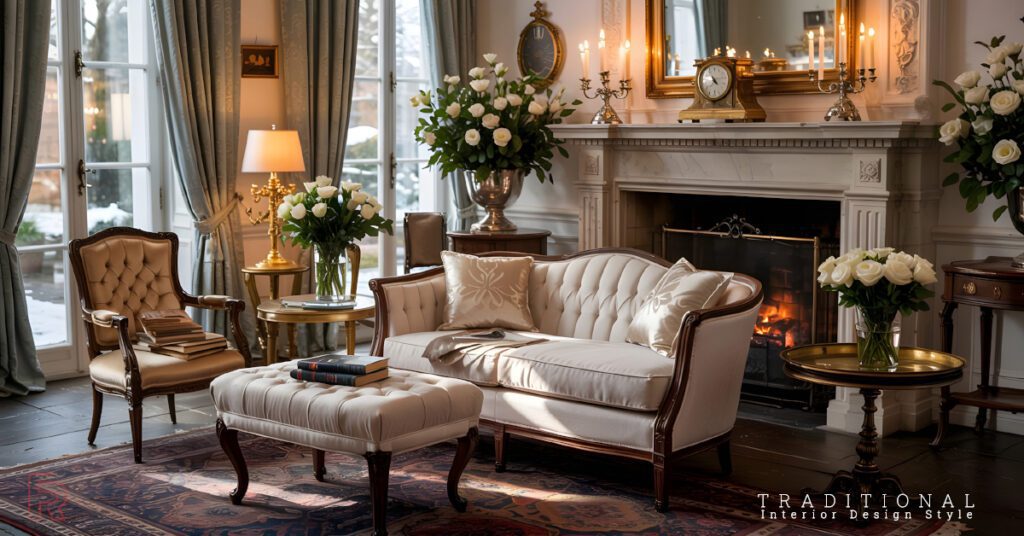
A traditional living room is the heart of classic interior aesthetics—rich in detail, warmth, and symmetry. These rooms are designed to feel welcoming, calm, and formal yet cozy.
Key Features:
- Color Palette: Neutral base tones like ivory, beige, and taupe, accented with muted greens, golds, or burgundy.
- Furniture: Upholstered sofas and armchairs in classic shapes—rolled arms, skirted bases, and carved wooden legs. Often arranged symmetrically around a coffee table or fireplace.
- Architectural Details: Crown moldings, chair rails, and detailed fireplace mantels.
- Textiles & Fabrics: Floral or damask patterns in curtains, cushions, and upholstery. Use of heavy fabrics like brocade or linen blends.
- Lighting: Elegant chandeliers, table lamps with fabric shades, and wall sconces.
Decor Touches:
- Floral or damask throw pillows and curtains.
- Classic oil paintings, landscape art, or vintage portraits in ornate gold frames.
- Brass or ceramic table lamps, candle holders, and potted plants.
Visual Aesthetic:
The traditional living room feels warm, refined, and welcoming. It showcases balance and order, with muted tones like beige, cream, and forest green complemented by rich wood finishes and plush textiles. The ambiance is sophisticated yet homely, perfect for both entertaining and relaxing.
🛏️Traditional Bedroom Design
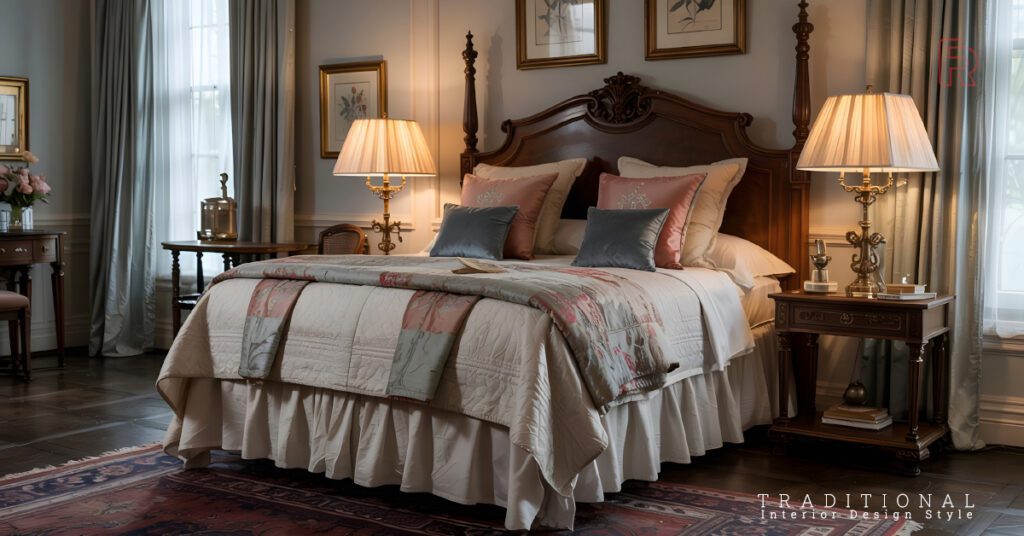
Bedrooms in traditional homes are meant to be serene sanctuaries—elegant, romantic, and organized.
Key Features:
- Beds: Four-poster or sleigh beds with carved wooden headboards, often dressed in layers of plush bedding, quilts, and decorative pillows.
- Nightstands & Dressers: Made from solid wood with classic brass or ceramic hardware.
- Color Scheme: Soft, tranquil tones like cream, soft blue, and sage green, sometimes with floral wallpaper or fabric panels.
- Lighting: Crystal chandeliers or antique-style bedside lamps.
- Drapery: Floor-length curtains with tiebacks, often lined and layered with sheers.
Decor Touches:
- Matching fabric lampshades and drapes.
- Embroidered linens, monogrammed cushions.
- Classic art prints, vintage mirrors, and delicate floral arrangements.
Visual Aesthetic:
The bedroom is a peaceful retreat with timeless elegance. Soft blues, sage green, ivory, and dusty rose dominate the palette. Every piece is functional yet decorative, combining comfort and tradition. Heavy drapery and rich wood tones provide depth and visual warmth.
🍽️Traditional Dining Room Design
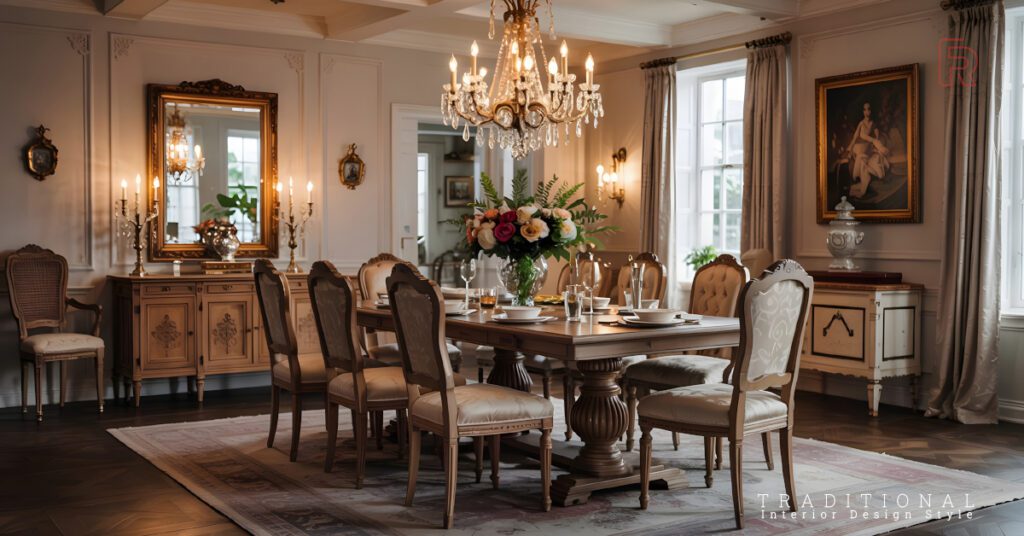
A formal dining room in traditional design reflects refinement, tradition, and ceremonial charm—perfect for gatherings and holidays.
Key Features:
- Dining Table: Large, rectangular or oval wood tables—often cherry or mahogany—with inlays or carved legs.
- Chairs: High-back upholstered chairs with wooden frames, sometimes featuring carved detailing or cabriole legs.
- Lighting: Crystal chandeliers centered over the table; wall sconces to supplement soft lighting.
- Buffet or Hutch: Furniture pieces for display and storage—typically showcasing fine china, silverware, and glassware.
- Decor: Framed classic paintings or mirrors, floral centerpieces, and table runners.
Decor Touches:
- China cabinets or buffets displaying porcelain, crystal, or silverware.
- Table runners, tapered candles in brass holders, and fresh floral centerpieces.
- Ornate mirrors and classical wall sconces.
Visual Aesthetic:
Traditional dining rooms are polished and ceremonial. Deep colors—like burgundy, navy, and gold—add drama. The room exudes elegance and is meant for formal dining occasions. Every piece of decor has a role in supporting tradition and refinement.
🍽️Traditional Style Kitchen Design
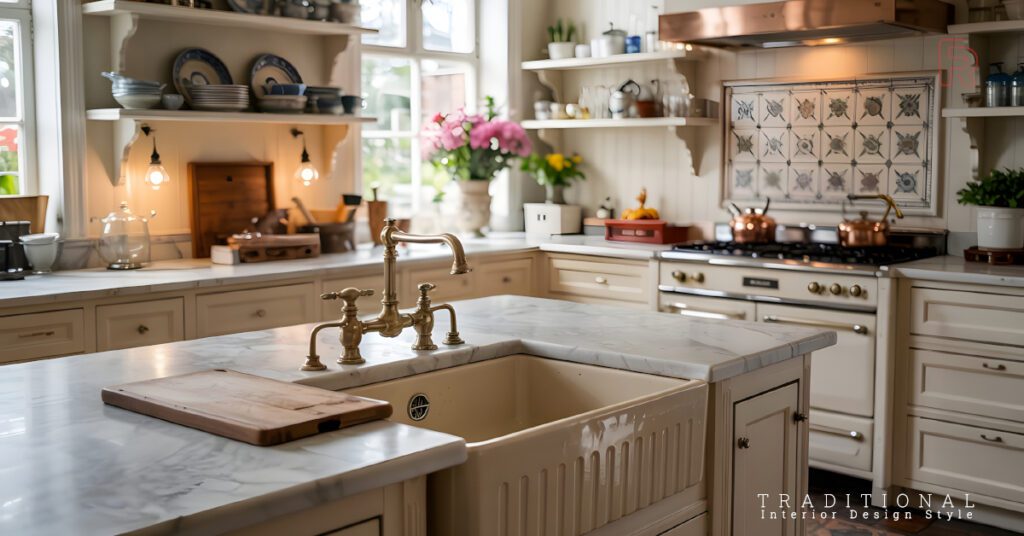
Traditional kitchens are designed to feel warm, inviting, and classic, with an emphasis on craftsmanship and natural materials. Here’s what defines a traditional kitchen:
Key Features:
- Cabinetry: Raised-panel doors in solid wood like cherry, walnut, or oak; often painted in cream, white, or muted tones like sage green or soft blue.
- Countertops: Natural stone such as granite or marble, often with rounded (bullnose or ogee) edges.
- Backsplashes: Ceramic tiles, subway tiles, or decorative mosaic in neutral or warm palettes.
- Flooring: Hardwood, terracotta, or natural stone tiles.
- Appliances: Often integrated or paneled to blend with cabinetry; retro-style appliances also fit well.
- Lighting: Lantern-style pendants, wrought iron chandeliers, and under-cabinet lighting.
Decor Touches:
- Open shelves with ceramic dishes
- Brass or oil-rubbed bronze hardware
- Crown molding and decorative corbels
Visual Aesthetic:
Traditional kitchens aim for a balance between elegance and homey warmth. It’s not overly minimal—there’s room for displaying cookbooks, vintage jars, or fresh herbs in pots.
🚽Traditional Bathroom (Toilet) Design
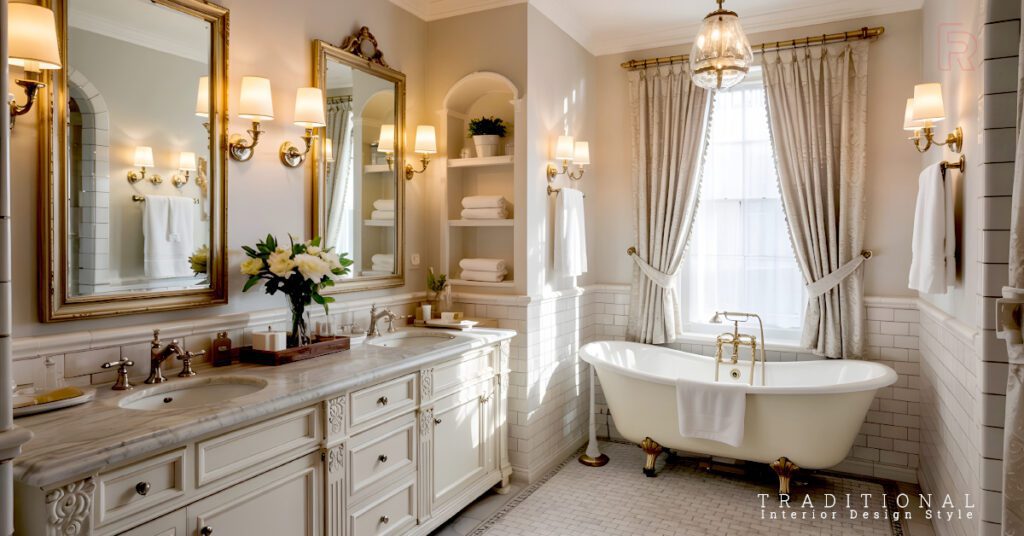
Bathrooms in traditional homes echo the elegance of old-world luxury and charm.
Key Features:
- Vanities: Furniture-style vanities with ornate legs, marble or stone tops, and vintage-inspired fixtures.
- Mirrors: Framed in carved wood or gold/gilded finishes—often oval or round shapes.
- Tiling: White subway tile, beadboard wainscoting, or patterned ceramic tiles on floors.
- Bathtubs: Clawfoot tubs are the epitome of traditional bathrooms.
- Sinks & Faucets: Porcelain sinks paired with cross-handle faucets in brass, nickel, or bronze finishes.
Color Palette:
- Soft neutrals: ivory, beige, powder blue, sage
- Accents in gold, black, or navy
Lighting & Décor:
- Wall sconces on either side of the mirror
- Crystal light fixtures or candle-style chandeliers
- Embroidered hand towels, ceramic accessories, and floral arrangements
Real-World Traditional Homes – Room Styles Summary Table
| Room | Traditional Features | Materials/Colors |
| Living Room | Fireplace, crown molding, antique furniture | Burgundy, forest green, cream |
| Bedroom | Canopy or sleigh beds, layered drapery, vintage lamps | Navy, gold, ivory, wood tones |
| Dining Room | Long wood table, chandelier, carved chairs | Deep reds, walnut finishes, porcelain accents |
| Kitchen | Paneled cabinets, granite countertops, classic hardware | White, sage, natural wood, brass |
| Bathroom | Canopy or sleigh beds, layered drapery, vintage lamps | White, pale blue, gold, chrome |
Expert Tips and Designer Insights
Interior designers suggest:
- “Let the architecture guide your design.”
- “Blend old with new for a fresh traditional feel.”
- “Don’t over-accessorize—less is more, even in traditional design.”
Read more realated topics
FAQ’s
What defines traditional interior design?
: It’s a classic style marked by symmetry, rich furnishings, and historical inspiration.
Is traditional design still in style?
Yes! It’s timeless and continues to evolve with modern touches.
Can I mix traditional with modern elements?
Absolutely. That’s what transitional style is all about.
Which colors suit traditional interiors best?
Burgundy, forest green, cream, navy, and gold tones.
Is traditional design expensive?
Not necessarily—many affordable options and DIY methods are available.
What kind of lighting fits this style?
Chandeliers, lamps with fabric shades, and ornate sconces.
Conclusion: Embracing the Grace of Traditional Interior Design
The Traditional Interior Design Style offers a window into the past while staying rooted in the present. Whether you’re furnishing a new home or refreshing an old one, this style delivers comfort, class, and lasting beauty. From ornate wood furniture to graceful symmetry, it’s the epitome of enduring design.
📚 Authoritative Resources & References
1. Architectural Digest – Home Tours & Traditional Interiors
- Website: https://www.architecturaldigest.com
- Description: Offers house tours and expert articles showcasing traditional and classical home designs from renowned interior designers.
2. House & Home – Traditional Home Makeovers
- YouTube Channel: https://www.youtube.com/@HouseandHome
- Description: Features Canadian traditional homes with walkthroughs, expert commentary, and room-by-room transformations.
3. The Spruce – Traditional Interior Design Guide
- Article: thespruce
- Description: Offers a comprehensive overview of what defines traditional style, with furniture and color examples.
4. Better Homes & Gardens – Traditional Room Ideas
- Website: https://www.bhg.com
- Search: “Traditional Interior Design”
- Description: Provides decorating tips, room layouts, and seasonal updates for traditional homes.
5. YouTube – Traditional House Tours and DIYs
- Keyword to Search: “Traditional home interior tour” or “Traditional living room makeover”
- Suggested Channels:
6. National Trust & British Heritage Sites
- Website: https://www.nationaltrust.org.uk
- Description: Excellent for understanding authentic Georgian, Victorian, and English country interior designs.
📖
Books on Traditional Interior Design
- “Classic Style” by Judith Miller – A detailed guide on traditional and neoclassical furnishings.
- “The Perfectly Imperfect Home” by Deborah Needleman – Covers traditional home elements with modern relevance.
- “Timeless Interiors” by Axel Vervoordt – Explores how tradition can harmonize with understated luxury.

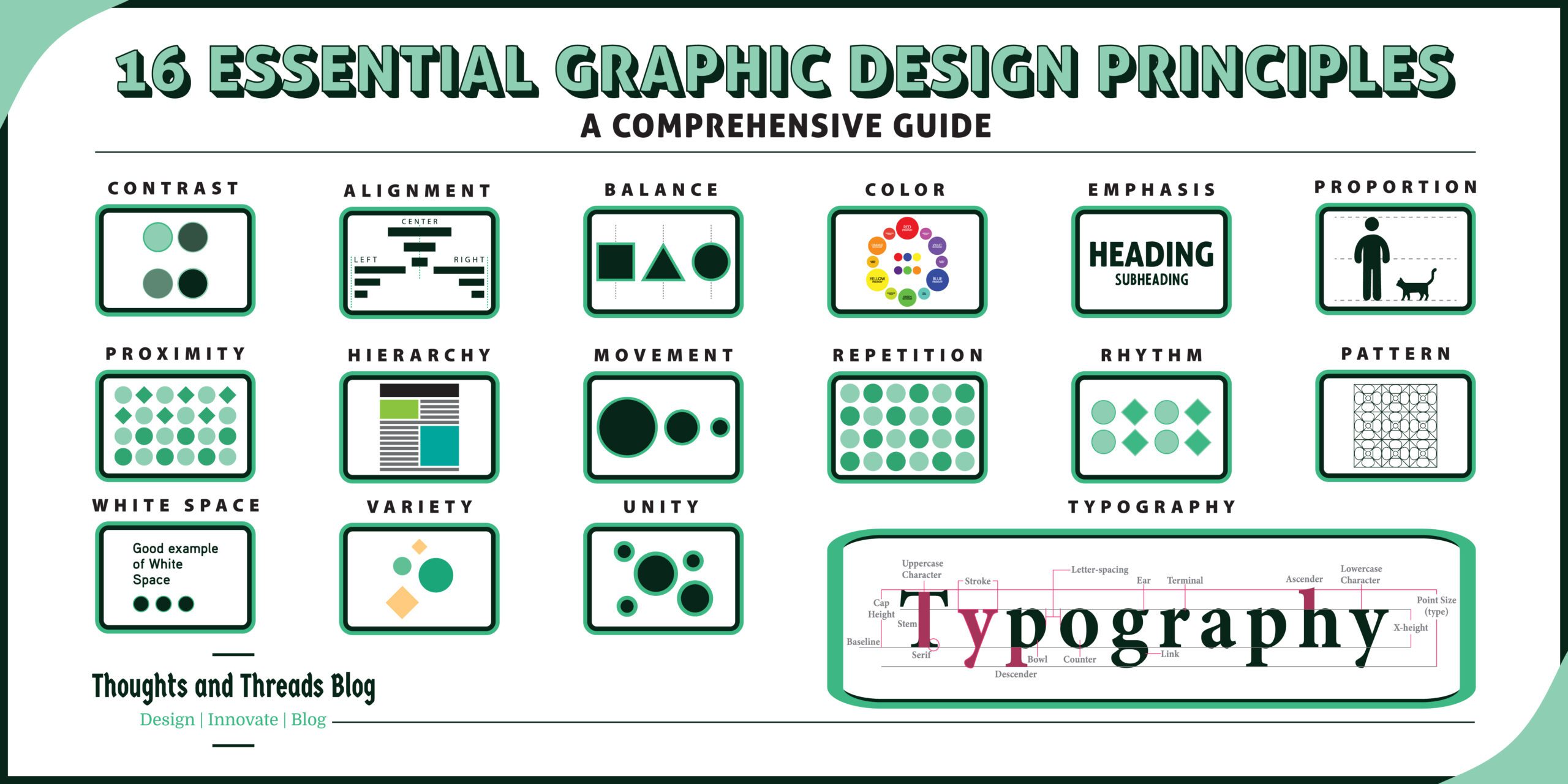
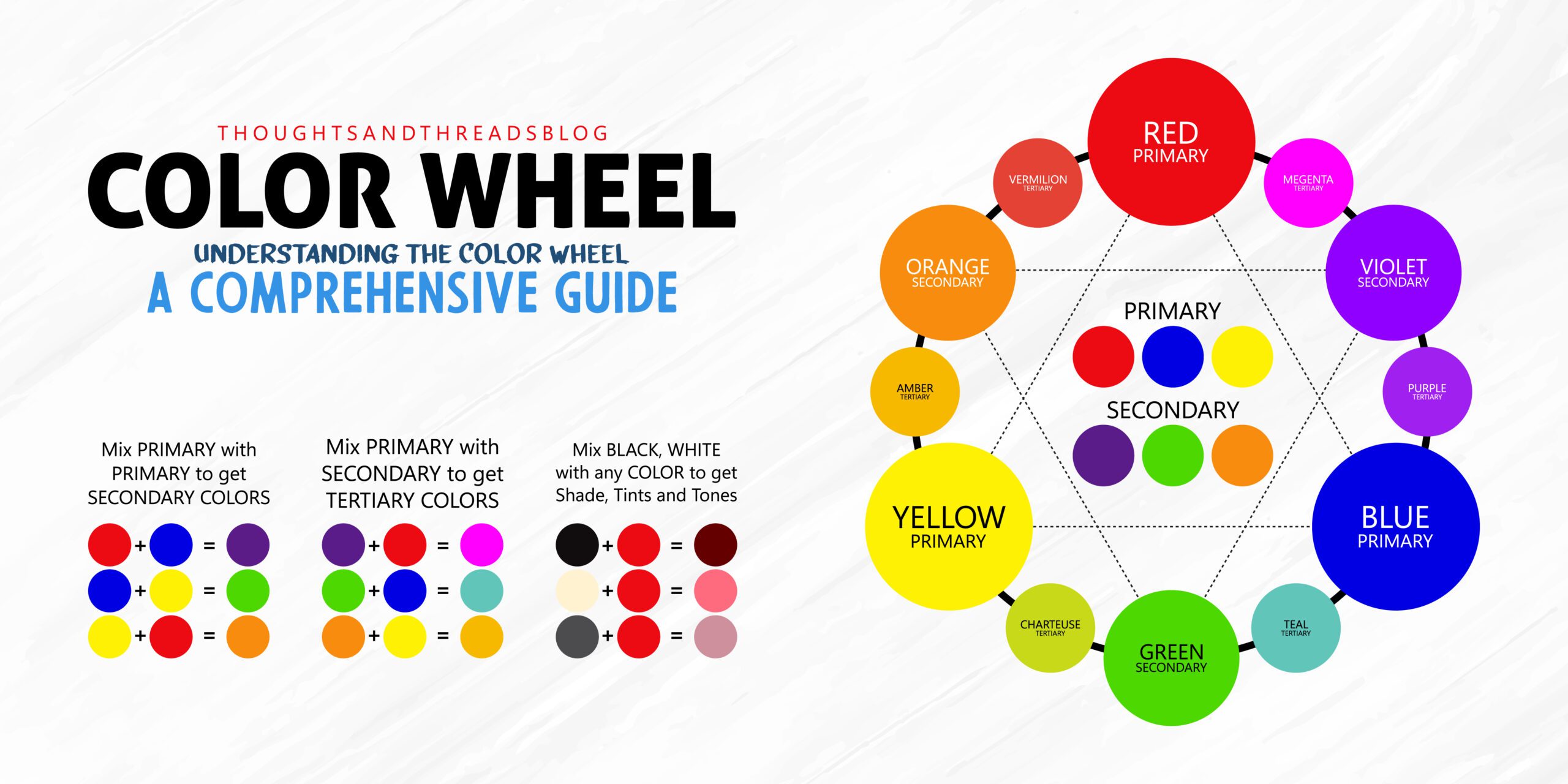
Leave a Comment